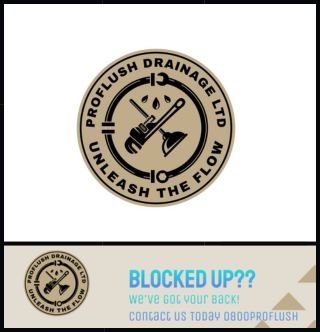Now more than ever we consider our pets as family members, so when heading off on a summer holiday, they come too. But travelling with your furry friends can require a bit of forward planning to ensure the safety of everyone concerned.
The Motor Trade Association (MTA) has put together a few tips and suggestions with advice from Wellington SPCA, to make sure your summer road trip is as stress free as possible.
As you pack the kids and luggage into the car ready to head off on a holiday, most people seldom think twice about putting the pets in the back before motoring off. “It’s just as important to consider the safety and needs of our pets on a long journey, as it is for our kids and other passengers”, says MTA spokesperson Jayne Murray.
Here are a few simple steps you can take to make travelling with your furry friends a lot easier and safer this holiday season.
An unrestrained pet could be seriously injured, or injure other people in the car, if a crash were to occur. A dog sitting unsecured in the back seat can become a large furry missile, if the car stops suddenly in an accident.
Unrestrained pets can also distract a driver and cause an accident if they get frightened or threatened by something. If involved in a crash, an unrestrained pet could escape and be hit by another vehicle, or cause another collision. And a frightened dog may attack strangers who are trying to help at the scene of an accident.
Wellington SPCA Chief Inspector Ritchie Dawson says: “As a pet owner you have an obligation under the Animal Welfare Act to transport your animal in a safe and secure manner. Cats are best travelling in a cage, and dogs should be restrained in a safety harness or crate.”
“If you’re travelling in a ute with an open deck, it is the legal responsibility of the owner to ensure that any load is secured in a safe manner, under the Land Transport Act. The best way to secure a dog on an open ute is to tether them to the middle of the front of the deck, right behind the cabin in the centre so the dog can’t lean out over the side. The tether needs to be long enough so they can sit and lay down comfortably, but short enough so it can’t lean out over the edge of the deck. If you were to go around a corner too quickly, and the tether is too long, you could hang your dog if it fell off the deck”, he says.
You wouldn’t let your kids hang out of the windows, would you? Keeping your pet inside the vehicle not only keeps them safe from getting hurt by objects outside, but it also keeps passersby safe too.
“If you’ve stopped to get petrol, or you’re caught in line of slow holiday traffic and a pedestrian or cyclist passes, if your dog is able to stick their head out the window, they’re not only going to give the person a fright, but might latch on. Then you’re in all sorts of trouble,” Dawson says.
Pets can get car sick too, so be prepared put some newspaper, a sheet or towels down so you can easily clean it up. Medication could work, but speak to your vet if your pet is nervous about travelling.
“Don’t feed them just before a trip. Feed them when you get to your destination, or if you stop for lunch. Give them a bit of food then, and let them go to the toilet and have a bit of a run around. Most people know if their pet is a good traveller or not. Stick to what’s tried and proven”, Dawson advises.
Never leave them unattended in a car for more than 10-15 minutes. If you’re going to stop and have lunch, make sure someone can stay with your pet. Let another person get takeaways, or sandwiches, or have a picnic, rather than leave your pet in the car.
“On a hot summer’s day, the inside of a car heats up very quickly. On a 30 degree day for example, the temperature inside your car even with the windows slightly opened or in the shade will reach 39 degrees within 10 minutes. In 30 minutes it can climb up to 49 degrees, or even higher, and for any pet trapped inside it becomes like an oven. These conditions can easily mean death for the animal”.
“It’s not an offence to leave your pet in the car, but if the animal suffers from any unnecessary pain or distress, you can be liable for criminal prosecution”, says Dawson.
Take the essentials with you; plenty of water, food, toilet bags, (don’t leave it on the side of the road), grooming equipment, bedding, bowls, a leash, a familiar toy, and any medication that your pet may have.
If you want to leave your pet at a boarding kennel or cattery, you’ll need to have to have a vaccination card vaccinations need to be up to date to get into boarding facilities. If you are planning on using a boarding kennel or cattery this will need to be booked well in advance if you’re going to have any luck getting in.
Just remember that you can get stuck in traffic, sometimes for hours so make sure you have plenty of water and food for everyone.
Make sure you know your destination and make sure that they’ve got the appropriate facilities for your pet when you get there. For example, if you’re staying with family somewhere else in the country, make sure they have a fenced yard to keep your dog secure in, and that there’s a kennel or shelter if the weather changes or to get out of the sun.
“Be prepared: you may need to take a few stops on the way. You might not do the trip in one day so find a motel or motor camp that allows pets. A lot of them do and it’s just a matter of asking. If you’ve got a well-behaved dog it could sleep in the back of the car at night,” says Dawson.
The main thing to do is to take a moment to think about your trip. If you are going to take your pet with you, plan your journey accordingly. If you don’t need to take your pet, then don’t leave them at home with someone to care for them. They’re not going to thank you for sitting in a hot stuffy car for hours on end.
If you have any concerns about travelling with pets, consult your vet or local SPCA for advice.


















